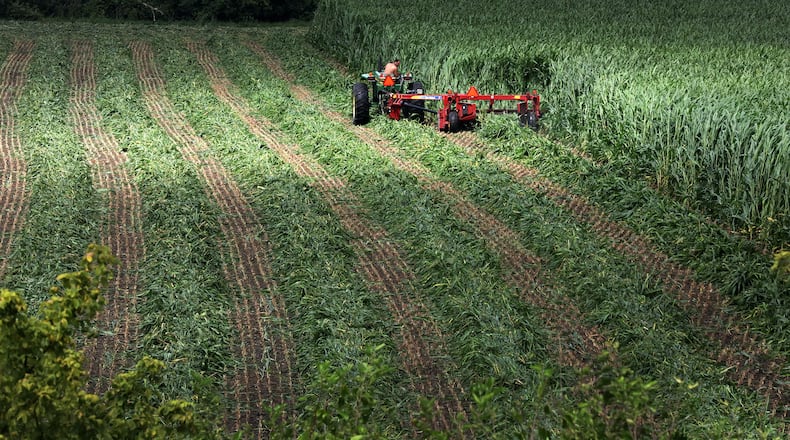For anyone needing a larger definition of the bounty of Thanksgiving, there’s this:
A four-stack of stadiums would have to be built next door to handle the 265 million bushels of soybeans, which largely have been harvested. At about $3.1 billion, using the Chicago Board of Trade price at last Friday’s closing, the soybeans harvest, though fewer in bushels, would be worth three-quarters of a million dollars more than the corn harvest.
Between, them the two towers would represent grain grown 8.8 million acres of Buckeye farmland and represent just short of $5.5 billion of product from an industry that employs one of every six people in the state and that the Ohio Department of Agriculture says contributes $124 billion annually to the economy.
Then there’s the distant cousin of corn and beans: wheat. The 35 million bushel harvest of this year would rise about halfway from the Jesse Owens Track to the top of the existing stadium
That’s low enough that the Ohio State Patrol officers who guard the scoreboard deck could help ensure the security of the nation’s bread supply. Calculated the wheat price at Friday’s closing, its worth is about $207.5 million.
All this – designed to demonstrate the scale of agriculture in Ohio, can be said of a harvest that is “pretty close to” or “maybe slightly below” average, said Ben Brown, assistant professor of agriculture risk management at the university’s College of Food, Agriculture and Environmental Sciences.
“Most people will tell you it’s a downer (year),” Brown said.
But because the numbers don’t bear that out, he says, it’s based on early expectations of “mammoth crops” that evaporated when the parched weather of August and September sliced into yields.
Melanie Wilt, whose Springfield-based communication firm, Shiftology, has represented agricultural interests or 20 years, is with Brown.
“By and large, the farmers that I talk to are happy with their yields,” she said.
And because prices have stayed uncharacteristically steady during the harvest, farmers could either sell their grain or store it themselves (in hopes of price increases) without fear of hurting their bottom lines.
Prices for hay, which provides farmers with welcome cash flow during the lengthy growing seasons, were also good this year, Wilt said, with the wheat harvest “one of the best in history.”
The Ohio Farm Bureau Federation said the wheat yield forecast of 76 bushels per acre “is up 20 bushels per acre from last year.”
Wilt added a touch of perspective, saying the “strange, difficult growing seasons for everybody across the state” last year was what all hope was a “once in a lifetime” experience.
Compared with 2019, this year’s harvest “feels tremendously wonderful,” she said.
“I don’t know any farmers getting incredibly rich at this moment,” but with demand from China steady in the past four or five months, “I think they’re maintaining and able to manage their business.”
The Ohio Department of agriculture says 77,000 farms are spread over nearly 14 million acres, is a leader in 35 production sectors, and in addition to commodities like soybeans, corn, pork, cattle and diary, produce berries, sweet corn, honeybees, chestnuts, sunflowers.
About the Author
